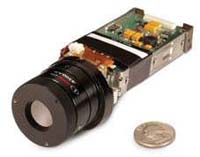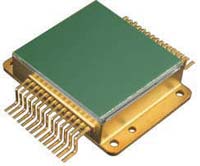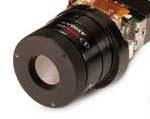Fire SuppressionArgus Thermal Imaging CamerasBetter Image QualityMakes Own "Core"Argus is unique in the industry in that they design, develop and build their own thermal imager “Core”, rather than sourcing it from an OEM like other companies. This allows Argus far greater control over the operation of their TIC, and enables them to provide a superior product with advanced Digital Signal Processing to provide a clearer image, and Tri-Mode Sensitivity for a higher temperature range. Argus designs a specific lens assembly to maximize the performance for fire applications. Next they purchase a high quality “sensor”. Then Argus develops specialized software & electronics to run and control the sensors. Terminology Descriptions:Core Camera “Core” (or “Engine”) is the complete camera package (sensor, electronics and lens assembly). Most manufacturers purchase the core from an OEM, because “off the shelf” cores reduce their costs. But for technically advanced companies, designing their own core offers huge advantages… Argus builds its own core to produce a higher quality, better performing product tailored specifically for firefighting use. It enables Argus' thermal imager to have a clearer image, and having a clear image inside a fire is the main purpose of a thermal imager. It also allows Argus to have Tri-Mode Sensitivity; three gain levels for a much higher top temperature range. Argus’ max temperature (dynamic range) is well over 1800°F on the Argus HR320, when most competitors’ top out at only 1100°F. Sensor Camera “Sensor” (or “Detector”, or “Microbolometer”) refers to the main infrared detection device inside all types of thermal cameras. Sensors are small Focal Plane Array (FPA) devices that convert the infrared energy into signals that are then processed to produce a viewable thermal image. An FPA is similar to an Integrated Circuit (IC) package with legs that are soldered onto a Printed Circuit Board (PCB). They are the central part of any thermal imaging camera. Argus cameras use high resolution 384 x 288 sensors, matched to the same format (4:3) but smaller 320 x 240 LCD screen. The process is the same as taking a digital picture and scaling it to make it smaller. This process is called "bi-linear interpolation" and it produces a higher quality image, based on the pixels from the higher resolution sensor. Lens Assembly
The Lens Assembly gives the user a focused thermal image. Without a lens assembly you would see a blank screen. The lens assembly has other uses:
The Argus4 lens assembly has been designed to have stable performance across a wide ambient temperature range. This ensures that the image quality does not deteriorate when the camera is moved from cool/cold storage and enters a hot flash over condition. The Argus lens assembly is made from a special material called germanium. |
|
